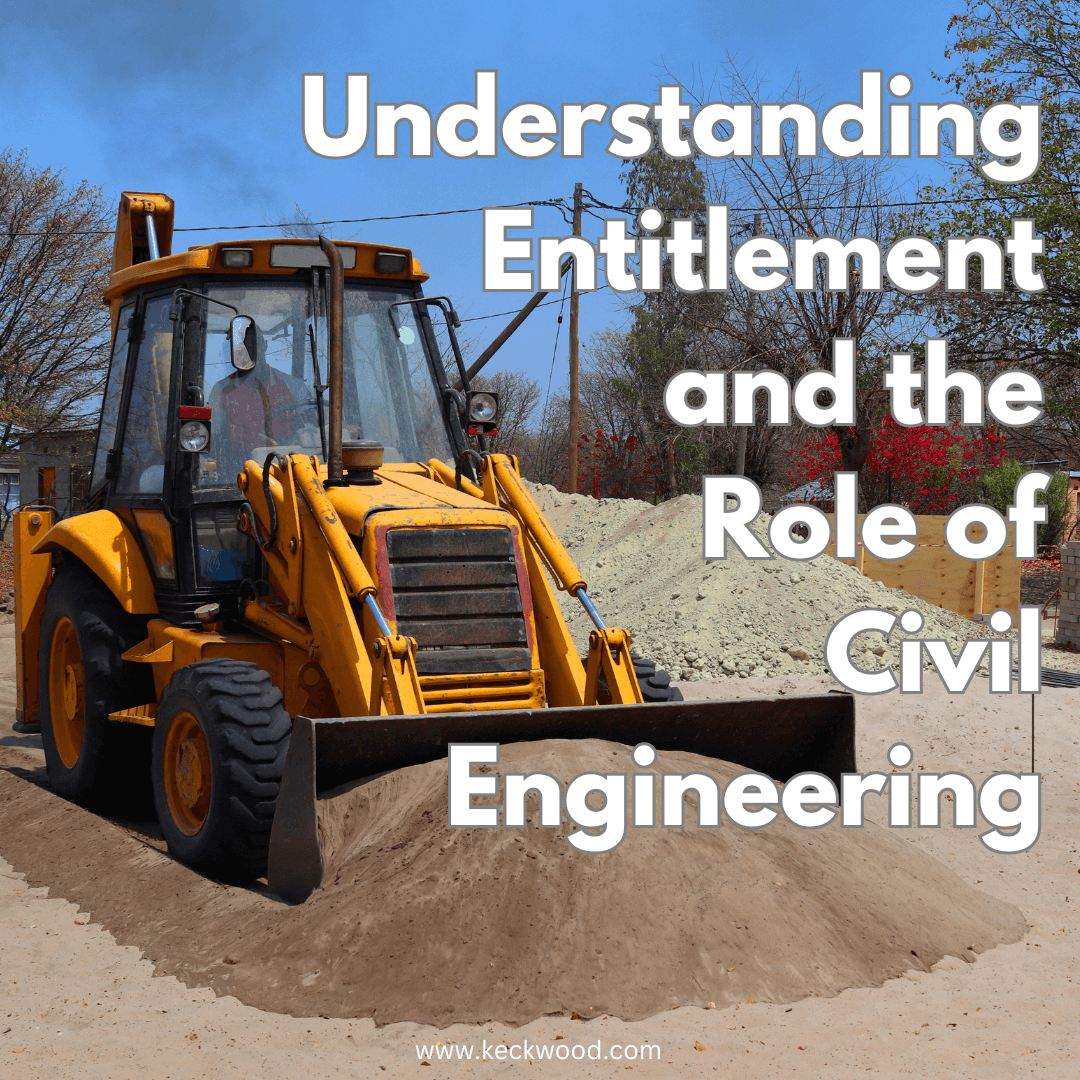In the field of civil engineering, it is not uncommon to come across the term ‘entitlement’ being used in reference to construction projects. The aim of this post is to provide a comprehensive understanding of entitlement and how it relates to various projects. It will cover the differences between entitlements and permits, examples of common entitlements, and the importance of due diligence in the entitlement process. By the end of this post, readers will have a better understanding of entitlement and the role it plays in land development.
Entitlement Vs. Permits
Before delving into entitlement, it is crucial to differentiate it from permits. In simple terms, a permit is a document issued by the local government that allows property owners or developers to carry out specific activities such as construction, modification, or demolition on their property. It is granted after a comprehensive review of the proposed project to determine if it complies with all applicable regulations, such as zoning regulations and building codes. In contrast, entitlement refers to the process of obtaining the legal right to develop land for a specific use, such as residential, commercial, or industrial purposes.
Moreover, entitlement is the initial stage of the land development process, while permits are issued after entitlement is approved. The entitlement process involves working with the local government agencies to obtain the necessary approvals and authorizations, which are required to carry out the intended project. This process is crucial because it provides assurance that the proposed project will be legally compliant, and all necessary regulatory requirements will be met.
In summary, it is important to understand that entitlement is distinct from permits, and obtaining entitlement is a prerequisite for property owners or developers to obtain permits. The entitlement process is critical as it sets the foundation for successful development project.
Examples of Entitlement
Entitlement is granted by local government agencies and takes different forms based on the proposed project. It provides or “entitles” certain planning and development rights to the property owner. For instance, a property owner may seek entitlement for a zoning change that allows them to convert land zoned for agricultural use to an industrial zone. In contrast, another property owner could seek entitlement for a conditional use permit, such as construction of multi-family housing units in a single-family residential zone. Some examples of entitlement include:
- Rezoning: Rezoning involves seeking a change in the zoning designation of a property, allowing it to be used for a different purpose. For example, obtaining permission to convert a piece of land from residential to commercial zoning.
- Use Permits: A Conditional Use Permit (CUP) or Special Use Permit (SUP)_is a special permit that grants permission to use a property for a specific purpose that is not typically allowed under the existing zoning regulations. This may include activities such as operating a daycare center in a residential neighborhood or establishing a restaurant in a commercial district.
- Subdivision Map/Plat: When a property owner intends to divide their land into multiple parcels, they typically need to obtain a Subdivision Plat entitlement. This process involves obtaining the necessary approvals to legally create separate lots or parcels within the property.
- Development Agreement: A Development Agreement is a legally binding contract between a developer and a local government agency. It outlines the rights, obligations, and conditions for both parties during the development process. It provides a framework for the project and ensures that the developer adheres to specific requirements set by the local government.
- Variances and Exceptions: In certain situations, a property owner may request a variance or exception to deviate from specific zoning standards or regulations. Variances are typically granted when strict adherence to the regulations would cause undue hardship, while exceptions may be given for minor deviations that have no significant impact on the surrounding area.
These examples illustrate some of the common entitlements that civil engineers and developers seek to obtain in order to proceed with their intended land use on a property. The specific entitlements required will depend on the local regulations and the nature of the proposed project.
Due Diligence for Entitlement
The process of due diligence is a critical aspect when considering the development of a property. To ensure a successful project outcome, there are several crucial components that must be considered before moving forward. Conducting thorough due diligence enables property owners and developers to ascertain potential restrictions, environmental impacts, regulatory issues, and other parameters that could affect the project. Critical components that must be assessed during due diligence include landscape buffers, stream buffers, driveway access, discretionary approvals, permitting and plat schedule, impact fees, jurisdictional authorities, and utility availability. By carefully evaluating these factors, property owners and developers can develop a realistic project timeline, make informed decisions, and minimize risks associated with the proposed project.
Here are some critical items that need to be considered during the due diligence process:
- Driveway Access: The access points of the property are critical as they impact both the safety and feasibility of the project. During due diligence, it is essential to consider the access points and whether they meet the local government’s standards for visibility and distance from the intersections and other driveways. It is also important to determine if the driveway will have full access or be restricted in its turning movements.
- Landscape Buffers: Landscape buffers are areas of vegetation that act as a visual barrier between adjacent properties. During due diligence, it is important to assess whether the property has any existing landscape buffers or if new ones need to be created to comply with local regulations and minimize conflicts with neighboring properties.
- Stream Buffers: Stream buffers are natural or artificial features used to protect waterways and riparian areas from development activities’ environmental effects. During due diligence, it is necessary to ascertain whether the property has any streams, creeks, or riparian areas within its boundaries or in close proximity and their respective buffers. It is essential to determine what regulations apply to those buffers and if any development limits exist.
- Discretionary Approvals: Discretionary approvals are permits and other entitlements that are subject to local government agency discretion and review. During due diligence, it is essential to identify any discretionary approvals that may be necessary for the project and determine the criteria for approval. Some examples of discretionary approvals may be in the form of guidelines that govern the overall aesthetics of buildings, parking lots and landscape areas. These are aimed to preserve the aesthetic character or enhance the appearance and appropriateness of the development.
- Permitting and Plat Schedule: During due diligence, it is necessary to identify the permitting process and the expected timeline for obtaining relevant permits and plat approval. This helps the developer get a sense of the duration, pertinent application requirements, review fees, as well as potential risks and challenges that could affect the project.
- Impact Fees: Impact fees are levies charged to fund infrastructure, services, or facilities necessary to accommodate the land use. During due diligence, it is essential to identify any impact fees that may apply to the proposed project and estimate the cost.
- Jurisdictional Authorities: Understanding the different tribal, state, or federal authorities is critical to evaluating restrictions, mitigation measures, and requirements associated with specific land attributes. During due diligence, it is essential to identify any such authorities and determine the extent of their regulatory influence on the project.
- Utility Availability: Access to utilities like gas, water, electricity, and sewer are critical to any development project. During due diligence, it is necessary to assess the availability of these utilities and determine the level of infrastructure required to connect to them. In some cases, projects may require offsite improvements, which may add extra costs and assessment of regulatory and environmental implications.
Conducting thorough due diligence on the property helps to mitigate risks, identify potential constraints and challenges, and develop a realistic project timeline and budget.
Conclusion
In conclusion, entitlement lays the foundation for obtaining the necessary approvals and permits to develop land for a proposed use. A comprehensive due diligence process, including site evaluation, infrastructure development, and environmental review, is key in identifying the potential constraints and conditions to developing the property. A civil engineer, working together with a developer or property owner, plays a critical role in conducting due diligence and ensuring the entitlement process is successful.







Leave A Comment